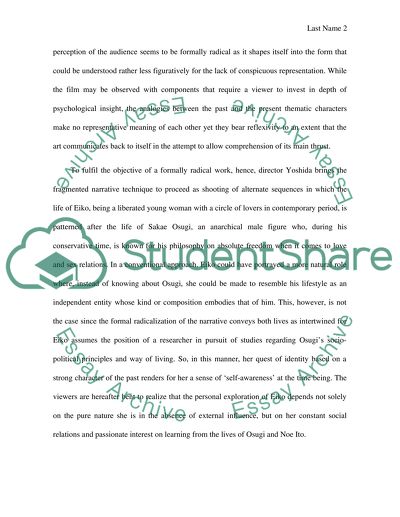Cite this document
(“Eros Plus Massacre by Yoshishige Yoshida Essay Example | Topics and Well Written Essays - 1250 words”, n.d.)
Eros Plus Massacre by Yoshishige Yoshida Essay Example | Topics and Well Written Essays - 1250 words. Retrieved from https://studentshare.org/visual-arts-film-studies/1483595-eros-plus-massacre-by-yoshishige-yoshida
Eros Plus Massacre by Yoshishige Yoshida Essay Example | Topics and Well Written Essays - 1250 words. Retrieved from https://studentshare.org/visual-arts-film-studies/1483595-eros-plus-massacre-by-yoshishige-yoshida
(Eros Plus Massacre by Yoshishige Yoshida Essay Example | Topics and Well Written Essays - 1250 Words)
Eros Plus Massacre by Yoshishige Yoshida Essay Example | Topics and Well Written Essays - 1250 Words. https://studentshare.org/visual-arts-film-studies/1483595-eros-plus-massacre-by-yoshishige-yoshida.
Eros Plus Massacre by Yoshishige Yoshida Essay Example | Topics and Well Written Essays - 1250 Words. https://studentshare.org/visual-arts-film-studies/1483595-eros-plus-massacre-by-yoshishige-yoshida.
“Eros Plus Massacre by Yoshishige Yoshida Essay Example | Topics and Well Written Essays - 1250 Words”, n.d. https://studentshare.org/visual-arts-film-studies/1483595-eros-plus-massacre-by-yoshishige-yoshida.


